all these shoudl open with real player from www.cbc.ca/cityspace
heres a news story of the construction going on in beijing
a story on moscow watch here
brasilia
the blossoming city of washington DC
dubai seen from a different view
this story is audio only - but worth a listen
The Current
Maximum Cities: New York, Paris, London shove over as an interview with author Rana Dasgupta makes the point developing-world megacities like Delhi are eclipsing the big cities of the developed world in vitality and risk-taking.
listen here>
Sunday, April 8, 2007
The Politest Cities In The World
New York the Politest City in the World
New Yorkers are a polite bunch. No, really, they are. So says Reader's Digest.
The magazine sent reporters "undercover" to 35 cities, in 35 countries, to measure courtesy. New York was the only American city on the list.
In a city with a reputation for being in-your-face, New Yorkers seem to be expressing themselves with a new one-finger salute: a raised pinkie. In fact, they seem to have even better manners than people in London, Toronto and Moscow.
In its admittedly unscientific survey, the magazine's politeness-police gave three types of tests to more than 2,000 unwitting participants.
The reporters walked into buildings to see if the people in front of them would hold the door open; bought small items in stores and recorded whether the salespeople said "thank you"; and dropped a folder full of papers in busy locations to see if anyone would help pick them up.
New Yorkers turned out to be the politest: 90 percent held the door open, 19 out of 20 store clerks said "thank you," and 63 percent of men and 47 percent of women helped with the flying papers.
In short, four out of five New Yorkers passed the courtesy test.
Mayor Michael Bloomberg said he's not surprised.
He told reporters Tuesday that whenever he travels abroad, he hears nothing but praise for the Big Apple's good manners.
"We are so jaded," he said. "We want to think the worst of ourselves, and people from around this country and around the world think exactly the reverse."
The rudest continent is Asia, Readers Digest said. Eight out of nine cities tested there — including last place Mumbai, India — finished in the bottom 11. In Europe, Moscow and Bucharest ranked as the least polite.
Reader's Digest, which has readers in 21 languages, is publishing the results in its July issue.
1. New York, USA 80%
2. Zürich, Switzerland 77%
3. Toronto, Canada 70%
4. Berlin, Germany 68%
5. Sao Paulo, Brazil 68%
6. Zagreb, Croatia 68%
7. Auckland, New Zealand 67%
8. Warsaw, Poland 67%
9. Mexico city, Mexico 65%
10. Stockholm, Sweden 63%
11. Vienna, Austria 60%
12. Prague, Czech Rep. 60%
13. Budapest, Hungary 60%
14. Madrid, Spain 60%
15. Buenos Aires, Argentina 57%
16. Johannesburg, South Africa 57%
17. Lisbon, Portugal 57%
18. London, UK 57%
19. Paris, France 57%
20. Amsterdam, Holland 52%
21. Helsinki, Finland 48%
22. Manila, Philippines 48%
23. Milan, Italy 47%
24. Sydney, Australia 47%
25. Bangkok, Thailand 45%
26. Hongkong 45%
27. Ljubljana, Slowenia 45%
28. Jakarta, Indonesia 43%
29. Taipeh, Taiwan 43%
30. Moscow, Russia 42%
31. Singapur 42%
32. Seoul, South Korea 40%
33. Bukarest, Romania 35%
34. Kuala Lumpur, Malaysia 32%
35. Mumbai, India 32%
http://www.foxnews.com/story/0,2933,200472,00.html>
New Yorkers are a polite bunch. No, really, they are. So says Reader's Digest.
The magazine sent reporters "undercover" to 35 cities, in 35 countries, to measure courtesy. New York was the only American city on the list.
In a city with a reputation for being in-your-face, New Yorkers seem to be expressing themselves with a new one-finger salute: a raised pinkie. In fact, they seem to have even better manners than people in London, Toronto and Moscow.
In its admittedly unscientific survey, the magazine's politeness-police gave three types of tests to more than 2,000 unwitting participants.
The reporters walked into buildings to see if the people in front of them would hold the door open; bought small items in stores and recorded whether the salespeople said "thank you"; and dropped a folder full of papers in busy locations to see if anyone would help pick them up.
New Yorkers turned out to be the politest: 90 percent held the door open, 19 out of 20 store clerks said "thank you," and 63 percent of men and 47 percent of women helped with the flying papers.
In short, four out of five New Yorkers passed the courtesy test.
Mayor Michael Bloomberg said he's not surprised.
He told reporters Tuesday that whenever he travels abroad, he hears nothing but praise for the Big Apple's good manners.
"We are so jaded," he said. "We want to think the worst of ourselves, and people from around this country and around the world think exactly the reverse."
The rudest continent is Asia, Readers Digest said. Eight out of nine cities tested there — including last place Mumbai, India — finished in the bottom 11. In Europe, Moscow and Bucharest ranked as the least polite.
Reader's Digest, which has readers in 21 languages, is publishing the results in its July issue.
1. New York, USA 80%
2. Zürich, Switzerland 77%
3. Toronto, Canada 70%
4. Berlin, Germany 68%
5. Sao Paulo, Brazil 68%
6. Zagreb, Croatia 68%
7. Auckland, New Zealand 67%
8. Warsaw, Poland 67%
9. Mexico city, Mexico 65%
10. Stockholm, Sweden 63%
11. Vienna, Austria 60%
12. Prague, Czech Rep. 60%
13. Budapest, Hungary 60%
14. Madrid, Spain 60%
15. Buenos Aires, Argentina 57%
16. Johannesburg, South Africa 57%
17. Lisbon, Portugal 57%
18. London, UK 57%
19. Paris, France 57%
20. Amsterdam, Holland 52%
21. Helsinki, Finland 48%
22. Manila, Philippines 48%
23. Milan, Italy 47%
24. Sydney, Australia 47%
25. Bangkok, Thailand 45%
26. Hongkong 45%
27. Ljubljana, Slowenia 45%
28. Jakarta, Indonesia 43%
29. Taipeh, Taiwan 43%
30. Moscow, Russia 42%
31. Singapur 42%
32. Seoul, South Korea 40%
33. Bukarest, Romania 35%
34. Kuala Lumpur, Malaysia 32%
35. Mumbai, India 32%
http://www.foxnews.com/story/0,2933,200472,00.html>
Moscow replaces Tokyo as world’s most expensive city
Worldwide Cost of Living Survey 2006: Moscow tops city rankings; Dublin in 18th place
By Finfacts Team
Jun 26, 2006, 07:16
§ Moscow replaces Tokyo as worldÂ's most expensive city; Asuncion n Paraguay is the cheapest
§ Most Eastern European cities have dropped sharply in the rankings
§ Many US cities have risen in the rankings due to the strength of the dollar
§ London drops two places to rank fifth
Moscow has replaced Tokyo as the worldÂ's most expensive city, according to the latest Cost of Living Survey from Mercer Human Resource Consulting, the global leader for HR and related financial advice. Seoul is in second place, climbing three places since last year. Tokyo moves down two positions in the rankings to take third place, followed by Hong Kong. Asuncion in Paraguay remains the least expensive city in the survey.
With New York as the base city scoring 100 points, Moscow scores 123.9 and is nearly three times costlier than Asuncion, which has an index of 43.5.
MercerÂ's survey covers 144 cities across six continents and measures the comparative cost of over 200 items in each location, including housing, transport, food, clothing, household goods and entertainment. It is the worldÂ's most comprehensive cost of living survey and is used to help multinational companies and governments determine compensation allowances for their expatriate employees.
Â"We have seen significant shifts in the cost of living rankings over the past few years, reflecting a changing global market. For many companies it can now be more expensive to send employees to work in Russia or Korea than places like Japan or Switzerland which are often perceived to be more costly,Â" commented Rebecca Powers, a Senior Consultant with MercerÂ's international business. She added: Â"More companies are now sending employees on expatriate assignments, so there is a greater need to keep pace with the cost of living changes. Employers need to be proactive in managing their expatriate programs to ensure they receive a proper return on their investment and employees are compensated fairly.Â"
There have been some significant changes in the rankings this year which are primarily due to exchange rate fluctuations, in particular the strengthening of the US dollar.
Europe
Moscow is the most expensive city in Europe and in the rest of the world, with a score of 123.9. Â"Steep accommodation costs have contributed to the cityÂ's high ranking, as the recent property boom has driven up rental prices for expatriates,Â" said Anna Krotova, Senior Researcher at Mercer.
London is the second most expensive city in Europe and ranks in 5th position (score 110.6). Â"While prices have actually increased slightly over the last year, the strengthening of the dollar against the pound means London has dropped two places since last year,Â" said Ms. Krotova.
Other costly European cities include Geneva in 7th place (103), Copenhagen in 8th (101.1) and Zurich in 9th (100.8) – all have been pushed down one place this year. Oslo remains in 10th place with a score of 100 while St. Petersburg is in 12th position (99.7).
Ms Krotova commented: Â"The Euro has weakened against a number of currencies, for example the Canadian and US dollars, reducing the cost of living for expatriates in many European countries.Â"
Kiev in Ukraine has moved up from 54th position to reach 21st place (score 89.8). This is mainly due to the appreciation of the local currency, the Hryvna, against the US dollar, together with general price increases. Many other Eastern European cities have dropped sharply in the ranking due to the devaluation of local currencies against the US dollar. For example, Prague has fallen 22 places to rank 50th with a score of 82.1.
Leipzig is EuropeÂ's cheapest city in 123rd position with a score of 68.1.
The Americas
New York remains the most expensive city in North America and climbs three places to 10th position (score 100). Currency appreciation is the main reason for this, although price increases in fuel and certain consumer goods have also contributed to New YorkÂ's rise in the rankings. Other high-ranking cities include Los Angeles in position 29 (86.7), San Francisco in 34th place (85) and Chicago in 38th position (84.1). Washington DC takes 83rd place (77). Winston Salem is the cheapest US city surveyed, ranked 124th (66.7).
Â"The strengthening of the US dollar against the European and other major currencies is a large contributor to the rise of most US cities in the rankings,Â" commented Ms Powers.
Though still relatively inexpensive and benefiting from stable inflation, Canadian cities continue to move up the rankings due to the strength of the Canadian dollar. Toronto is the most expensive city in Canada and moves up from 82nd to 47th place (82.6). Ottawa remains the least expensive Canadian city but has climbed 32 places from 122nd to 90th (75.6).
Sao Paulo and Rio de Janeiro are the most expensive cities in Latin America moving up from 119th and 124th positions to 34th and 40th place respectively. These movements are due to the strong appreciation of the Brazilian Real against the US dollar (more than 20 %), which has occurred as a result of solid economic growth and increased foreign investment over the last two years, together with reduced public debt and high interest rates. In particular, the cost of international-standard accommodation has risen significantly in these cities.
Asuncion in Paraguay remains the least expensive city globally, in 144th position with a score of 43.5. Other cheap cities include Buenos Aires, Montevideo and Caracas in 142nd place (score 54.8.), 138th (56.5) and 136th (57.2) respectively.
Puerto Rico has experienced high inflation during the last year which, together with the strength of the countryÂ's currency (US dollar), means San Juan is the costliest city in Central America and the Caribbean in 55th position (score 81.4). San Jose is the least expensive in 134th place (58.1). Santo Domingo in the Dominican Republic is in 126th position (65.3) and has dropped 27 places due to the depreciation of the Dominican Peso against the US dollar.
Asia
Three of the worldÂ's ten costliest cities are in Asia, with Seoul moving up from 5th to second place. While Tokyo has lost its title of the world most expensive city because of currency fluctuations between the Japanese Yen and the US dollar, it still ranks highly and takes third place. Hong Kong is in 4th position.
Â"Chinese cities have moved up slightly in the rankings as the value of the Yuan renminbi is now pegged to a number of currencies rather than just the US dollar,Â" said Ms Krotova. Beijing is in position 14 (score 94.9) followed by Shanghai in 20th place (91.2).
Australasia
Auckland and Wellington have dropped in the rankings this year to positions 100 and 105 respectively (scores 72.9 and 71.1) due to the significant devaluation of the New Zealand dollar against the US dollar. Sydney is still the most expensive city in the region at 19th place with a score of 91.3. Melbourne occupies 74th place (78.8) while Brisbane is in 99th position (73.2).
Individual reports are produced for each city surveyed. For further information or to purchase copies of the city reports, visit here, or call Mercer Global Information Services, Geneva on +41 22 869 3000.
© Copyright 2006 by Finfacts.com>
By Finfacts Team
Jun 26, 2006, 07:16
§ Moscow replaces Tokyo as worldÂ's most expensive city; Asuncion n Paraguay is the cheapest
§ Most Eastern European cities have dropped sharply in the rankings
§ Many US cities have risen in the rankings due to the strength of the dollar
§ London drops two places to rank fifth
Moscow has replaced Tokyo as the worldÂ's most expensive city, according to the latest Cost of Living Survey from Mercer Human Resource Consulting, the global leader for HR and related financial advice. Seoul is in second place, climbing three places since last year. Tokyo moves down two positions in the rankings to take third place, followed by Hong Kong. Asuncion in Paraguay remains the least expensive city in the survey.
With New York as the base city scoring 100 points, Moscow scores 123.9 and is nearly three times costlier than Asuncion, which has an index of 43.5.
MercerÂ's survey covers 144 cities across six continents and measures the comparative cost of over 200 items in each location, including housing, transport, food, clothing, household goods and entertainment. It is the worldÂ's most comprehensive cost of living survey and is used to help multinational companies and governments determine compensation allowances for their expatriate employees.
Â"We have seen significant shifts in the cost of living rankings over the past few years, reflecting a changing global market. For many companies it can now be more expensive to send employees to work in Russia or Korea than places like Japan or Switzerland which are often perceived to be more costly,Â" commented Rebecca Powers, a Senior Consultant with MercerÂ's international business. She added: Â"More companies are now sending employees on expatriate assignments, so there is a greater need to keep pace with the cost of living changes. Employers need to be proactive in managing their expatriate programs to ensure they receive a proper return on their investment and employees are compensated fairly.Â"
There have been some significant changes in the rankings this year which are primarily due to exchange rate fluctuations, in particular the strengthening of the US dollar.
Europe
Moscow is the most expensive city in Europe and in the rest of the world, with a score of 123.9. Â"Steep accommodation costs have contributed to the cityÂ's high ranking, as the recent property boom has driven up rental prices for expatriates,Â" said Anna Krotova, Senior Researcher at Mercer.
London is the second most expensive city in Europe and ranks in 5th position (score 110.6). Â"While prices have actually increased slightly over the last year, the strengthening of the dollar against the pound means London has dropped two places since last year,Â" said Ms. Krotova.
Other costly European cities include Geneva in 7th place (103), Copenhagen in 8th (101.1) and Zurich in 9th (100.8) – all have been pushed down one place this year. Oslo remains in 10th place with a score of 100 while St. Petersburg is in 12th position (99.7).
Ms Krotova commented: Â"The Euro has weakened against a number of currencies, for example the Canadian and US dollars, reducing the cost of living for expatriates in many European countries.Â"
Kiev in Ukraine has moved up from 54th position to reach 21st place (score 89.8). This is mainly due to the appreciation of the local currency, the Hryvna, against the US dollar, together with general price increases. Many other Eastern European cities have dropped sharply in the ranking due to the devaluation of local currencies against the US dollar. For example, Prague has fallen 22 places to rank 50th with a score of 82.1.
Leipzig is EuropeÂ's cheapest city in 123rd position with a score of 68.1.
The Americas
New York remains the most expensive city in North America and climbs three places to 10th position (score 100). Currency appreciation is the main reason for this, although price increases in fuel and certain consumer goods have also contributed to New YorkÂ's rise in the rankings. Other high-ranking cities include Los Angeles in position 29 (86.7), San Francisco in 34th place (85) and Chicago in 38th position (84.1). Washington DC takes 83rd place (77). Winston Salem is the cheapest US city surveyed, ranked 124th (66.7).
Â"The strengthening of the US dollar against the European and other major currencies is a large contributor to the rise of most US cities in the rankings,Â" commented Ms Powers.
Though still relatively inexpensive and benefiting from stable inflation, Canadian cities continue to move up the rankings due to the strength of the Canadian dollar. Toronto is the most expensive city in Canada and moves up from 82nd to 47th place (82.6). Ottawa remains the least expensive Canadian city but has climbed 32 places from 122nd to 90th (75.6).
Sao Paulo and Rio de Janeiro are the most expensive cities in Latin America moving up from 119th and 124th positions to 34th and 40th place respectively. These movements are due to the strong appreciation of the Brazilian Real against the US dollar (more than 20 %), which has occurred as a result of solid economic growth and increased foreign investment over the last two years, together with reduced public debt and high interest rates. In particular, the cost of international-standard accommodation has risen significantly in these cities.
Asuncion in Paraguay remains the least expensive city globally, in 144th position with a score of 43.5. Other cheap cities include Buenos Aires, Montevideo and Caracas in 142nd place (score 54.8.), 138th (56.5) and 136th (57.2) respectively.
Puerto Rico has experienced high inflation during the last year which, together with the strength of the countryÂ's currency (US dollar), means San Juan is the costliest city in Central America and the Caribbean in 55th position (score 81.4). San Jose is the least expensive in 134th place (58.1). Santo Domingo in the Dominican Republic is in 126th position (65.3) and has dropped 27 places due to the depreciation of the Dominican Peso against the US dollar.
Asia
Three of the worldÂ's ten costliest cities are in Asia, with Seoul moving up from 5th to second place. While Tokyo has lost its title of the world most expensive city because of currency fluctuations between the Japanese Yen and the US dollar, it still ranks highly and takes third place. Hong Kong is in 4th position.
Â"Chinese cities have moved up slightly in the rankings as the value of the Yuan renminbi is now pegged to a number of currencies rather than just the US dollar,Â" said Ms Krotova. Beijing is in position 14 (score 94.9) followed by Shanghai in 20th place (91.2).
Australasia
Auckland and Wellington have dropped in the rankings this year to positions 100 and 105 respectively (scores 72.9 and 71.1) due to the significant devaluation of the New Zealand dollar against the US dollar. Sydney is still the most expensive city in the region at 19th place with a score of 91.3. Melbourne occupies 74th place (78.8) while Brisbane is in 99th position (73.2).
Individual reports are produced for each city surveyed. For further information or to purchase copies of the city reports, visit here, or call Mercer Global Information Services, Geneva on +41 22 869 3000.
© Copyright 2006 by Finfacts.com>
Worldwide Quality of Living Survey 2006
Worldwide Quality of Living Survey 2006
Rank2006 / Rank2005 / City / Country / Index2006 / Index2005
1 1 ZURICH Switzerland 108.2 108.0
2 2 GENEVA Switzerland 108.1 107.9
3 3 VANCOUVER Canada 107.7 107.4
4 3 VIENNA Austria 107.5 107.4
5 8 AUCKLAND New Zealand 107.3 106.5
6 5 DUSSELDORF Germany 107.2 107.0
7 6 FRANKFURT Germany 107.0 106.8
8 7 MUNICH Germany 106.8 106.7
9 9 BERN Switzerland 106.5 106.4
9 9 SYDNEY Australia 106.5 106.4
11 11 COPENHAGEN Denmark 106.2 106.2
12 14 WELLINGTON New Zealand 105.8 105.0
13 12 AMSTERDAM Netherlands 105.7 105.7
14 13 BRUSSELS Belgium 105.6 105.6
15 16 TORONTO Canada 105.4 104.9
16 16 BERLIN Germany 105.1 104.9
17 14 MELBOURNE Australia 105.0 105.0
18 18 LUXEMBOURG Luxembourg 104.8 104.8
18 21 OTTAWA Canada 104.8 104.3
20 19 STOCKHOLM Sweden 104.7 104.7
21 20 PERTH Australia 104.5 104.5
22 22 MONTREAL Canada 104.3 104.0
23 22 NURNBERG Germany 104.1 104.0
24 22 DUBLIN Ireland 103.8 104.0
25 25 CALGARY Canada 103.6 103.3
26 25 HAMBURG Germany 103.4 103.3
27 25 HONOLULU, HI United States 103.3 103.3
28 28 SAN FRANCISCO, CA United States 103.2 103.2
29 29 ADELAIDE Australia 103.1 103.1
29 29 HELSINKI Finland 103.1 103.1
31 31 BRISBANE Australia 102.8 103.0
31 32 OSLO Norway 102.8 102.8
33 33 PARIS France 102.7 102.7
34 35 SINGAPORE Singapore 102.5 102.0
35 34 TOKYO Japan 102.3 102.3
36 36 BOSTON, MA United States 101.9 101.9
37 37 LYON France 101.6 101.6
37 37 YOKOHAMA Japan 101.6 101.6
39 39 LONDON United Kingdom 101.2 101.2
40 40 KOBE Japan 101.0 101.0
41 41 WASHINGTON, DC United States 100.4 100.4
41 52 CHICAGO, IL United States 100.4 99.3
43 42 PORTLAND, OR United States 100.3 100.3
44 43 BARCELONA Spain 100.2 100.2
45 44 MADRID Spain 100.1 100.1
46 45 NEW YORK CITY, NY United States 100.0 100.0
47 46 SEATTLE, WA United States 99.9 99.9
48 47 LEXINGTON, KY United States 99.8 99.8
49 48 PITTSBURGH, PA United States 99.7 99.7
49 48 WINSTON SALEM, NC United States 99.7 99.7
51 50 OSAKA Japan 99.6 99.6
51 51 MILAN Italy 99.6 99.4>
Rank2006 / Rank2005 / City / Country / Index2006 / Index2005
1 1 ZURICH Switzerland 108.2 108.0
2 2 GENEVA Switzerland 108.1 107.9
3 3 VANCOUVER Canada 107.7 107.4
4 3 VIENNA Austria 107.5 107.4
5 8 AUCKLAND New Zealand 107.3 106.5
6 5 DUSSELDORF Germany 107.2 107.0
7 6 FRANKFURT Germany 107.0 106.8
8 7 MUNICH Germany 106.8 106.7
9 9 BERN Switzerland 106.5 106.4
9 9 SYDNEY Australia 106.5 106.4
11 11 COPENHAGEN Denmark 106.2 106.2
12 14 WELLINGTON New Zealand 105.8 105.0
13 12 AMSTERDAM Netherlands 105.7 105.7
14 13 BRUSSELS Belgium 105.6 105.6
15 16 TORONTO Canada 105.4 104.9
16 16 BERLIN Germany 105.1 104.9
17 14 MELBOURNE Australia 105.0 105.0
18 18 LUXEMBOURG Luxembourg 104.8 104.8
18 21 OTTAWA Canada 104.8 104.3
20 19 STOCKHOLM Sweden 104.7 104.7
21 20 PERTH Australia 104.5 104.5
22 22 MONTREAL Canada 104.3 104.0
23 22 NURNBERG Germany 104.1 104.0
24 22 DUBLIN Ireland 103.8 104.0
25 25 CALGARY Canada 103.6 103.3
26 25 HAMBURG Germany 103.4 103.3
27 25 HONOLULU, HI United States 103.3 103.3
28 28 SAN FRANCISCO, CA United States 103.2 103.2
29 29 ADELAIDE Australia 103.1 103.1
29 29 HELSINKI Finland 103.1 103.1
31 31 BRISBANE Australia 102.8 103.0
31 32 OSLO Norway 102.8 102.8
33 33 PARIS France 102.7 102.7
34 35 SINGAPORE Singapore 102.5 102.0
35 34 TOKYO Japan 102.3 102.3
36 36 BOSTON, MA United States 101.9 101.9
37 37 LYON France 101.6 101.6
37 37 YOKOHAMA Japan 101.6 101.6
39 39 LONDON United Kingdom 101.2 101.2
40 40 KOBE Japan 101.0 101.0
41 41 WASHINGTON, DC United States 100.4 100.4
41 52 CHICAGO, IL United States 100.4 99.3
43 42 PORTLAND, OR United States 100.3 100.3
44 43 BARCELONA Spain 100.2 100.2
45 44 MADRID Spain 100.1 100.1
46 45 NEW YORK CITY, NY United States 100.0 100.0
47 46 SEATTLE, WA United States 99.9 99.9
48 47 LEXINGTON, KY United States 99.8 99.8
49 48 PITTSBURGH, PA United States 99.7 99.7
49 48 WINSTON SALEM, NC United States 99.7 99.7
51 50 OSAKA Japan 99.6 99.6
51 51 MILAN Italy 99.6 99.4>
Dangerous cities, yet cool cities.
What are some cities you can think of that are pretty dangerous/mysterious, yet very interesting and you would like to visit?
One I can think of is New Orleans. The city just seems so incredible and intresting, yet crime infested.
I believe the city has the highest murder rate in the United States. It also is filled with beggars, panhandlers, con artists, theives, pickpockets..etc from what I hear. I also hear that if you walk certain blocks out of the French Quarter...that your have a pretty nice chance of losing something of value, perhaps your life. New Orleans is also famous for its above ground cemetaries. When I visit there, I was planning on going by myself and touring the infamous cemetaries (cities of the dead as they call them)...which is a bad idea from what I read. Theives and muggers actually hide inside the cemetary, inbetween the above ground crypts waiting to strike.



voodoo
markings on a famous grave
There are also people who go to these cemeteries to practice voodoo or pay respects to dead priestesses. The city is also has a history of hauntings...mainly due to it being very old, the site of historic battles, and the slaves with their voodoo rituals. Oh yeah, there is also a history of pirates in the city.
"Pirates Alley"

if anyone else knows any weird or creepy things about N.O., please post. Thanks.>
One I can think of is New Orleans. The city just seems so incredible and intresting, yet crime infested.
I believe the city has the highest murder rate in the United States. It also is filled with beggars, panhandlers, con artists, theives, pickpockets..etc from what I hear. I also hear that if you walk certain blocks out of the French Quarter...that your have a pretty nice chance of losing something of value, perhaps your life. New Orleans is also famous for its above ground cemetaries. When I visit there, I was planning on going by myself and touring the infamous cemetaries (cities of the dead as they call them)...which is a bad idea from what I read. Theives and muggers actually hide inside the cemetary, inbetween the above ground crypts waiting to strike.



voodoo

markings on a famous grave
There are also people who go to these cemeteries to practice voodoo or pay respects to dead priestesses. The city is also has a history of hauntings...mainly due to it being very old, the site of historic battles, and the slaves with their voodoo rituals. Oh yeah, there is also a history of pirates in the city.
"Pirates Alley"

if anyone else knows any weird or creepy things about N.O., please post. Thanks.>
Which cities belong in different countries?
I know someone who once said that San Francisco ought to be in Canada or Denmark. I'll leave it you to decipher the reasoning behind that.
Anyway, the only city I can think of that should be placed elsewhere is Boston, which would work wonders as a French metropolis.>
Anyway, the only city I can think of that should be placed elsewhere is Boston, which would work wonders as a French metropolis.>
Multiple explosions rock London
Multiple explosions rock London
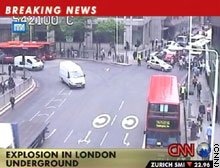

Thursday, July 7, 2005; Posted: 5:38 a.m. EDT (09:38 GMT)
LONDON, England -- A bus was ripped apart in an explosion in central London today and several blasts rocked the Tube network leaving dozens of people injured.
The Tube blasts at the height of the rush hour on Thursday were initially blamed on a power surge.
But amid the chaos eyewitnesses reported that a packed double decker bus in the Russell Square area had been severely damaged in a blast.
Union officials blamed the Tube blasts on a series of bombs, and Scotland Yard confirmed the bus explosion and said it was dealing with "multiple explosions" in London.
A second bus was reported to have been damaged in Tavistock Square.
Describing the Russell Square blast, eyewitness Belinda Seabrook told the UK Press Association she saw an explosion rip through the bus as it approached the Square.
"I was on the bus in front and heard an incredible bang, I turned round and half the double decker bus was in the air," she said.
She said the bus was travelling from Euston to Russell Square and had been "packed" with people turned away from Tube stops.
Travellers emerged from underground tunnels covered in blood and soot. Scotland Yard declared the emergency a "major incident."
Emergency services were called to London's Liverpool Street Station after reports of an explosion shortly before 9 a.m.
A short while later, London Underground said there had been "another incident at Edgware Road" station in north west London.
A London Ambulance Service spokeswoman said: "We have just sent some resources out to the scene. We have sent a number of vehicles to Liverpool Street station."
Police told the UK Press Association there were "walking wounded" and said paramedics had responded to one report of a person classed as "life at risk."
"There are walking wounded, but that is as much as we know at the moment," said the spokesman.
He confirmed that the incident took place on the Metropolitan Line between Aldgate and Liverpool Street and said the line has been evacuated. King's Cross, Liverpool Street and Aldgate stations have also been cleared.
The incident caused major disruption to the entire network with stations across the capital being closed.
Passengers were told that all services were being suspended because of a power fault across the network.
A City of London Police spokesman said: "We have closed Liverpool Street station as well as Aldgate.
"We believe there was some sort of explosion. There are some walking wounded at Aldgate. "We are not sure of the scale of the incident. Reports are still coming in."
another report: http://news.bbc.co.uk/1/hi/england/london/4659093.stm>


Thursday, July 7, 2005; Posted: 5:38 a.m. EDT (09:38 GMT)
LONDON, England -- A bus was ripped apart in an explosion in central London today and several blasts rocked the Tube network leaving dozens of people injured.
The Tube blasts at the height of the rush hour on Thursday were initially blamed on a power surge.
But amid the chaos eyewitnesses reported that a packed double decker bus in the Russell Square area had been severely damaged in a blast.
Union officials blamed the Tube blasts on a series of bombs, and Scotland Yard confirmed the bus explosion and said it was dealing with "multiple explosions" in London.
A second bus was reported to have been damaged in Tavistock Square.
Describing the Russell Square blast, eyewitness Belinda Seabrook told the UK Press Association she saw an explosion rip through the bus as it approached the Square.
"I was on the bus in front and heard an incredible bang, I turned round and half the double decker bus was in the air," she said.
She said the bus was travelling from Euston to Russell Square and had been "packed" with people turned away from Tube stops.
Travellers emerged from underground tunnels covered in blood and soot. Scotland Yard declared the emergency a "major incident."
Emergency services were called to London's Liverpool Street Station after reports of an explosion shortly before 9 a.m.
A short while later, London Underground said there had been "another incident at Edgware Road" station in north west London.
A London Ambulance Service spokeswoman said: "We have just sent some resources out to the scene. We have sent a number of vehicles to Liverpool Street station."
Police told the UK Press Association there were "walking wounded" and said paramedics had responded to one report of a person classed as "life at risk."
"There are walking wounded, but that is as much as we know at the moment," said the spokesman.
He confirmed that the incident took place on the Metropolitan Line between Aldgate and Liverpool Street and said the line has been evacuated. King's Cross, Liverpool Street and Aldgate stations have also been cleared.
The incident caused major disruption to the entire network with stations across the capital being closed.
Passengers were told that all services were being suspended because of a power fault across the network.
A City of London Police spokesman said: "We have closed Liverpool Street station as well as Aldgate.
"We believe there was some sort of explosion. There are some walking wounded at Aldgate. "We are not sure of the scale of the incident. Reports are still coming in."
another report: http://news.bbc.co.uk/1/hi/england/london/4659093.stm>
Puerto Madero, Buenos Aires - 1986 vs 2005 !!!!!
This is the recently transformed district of Puerto Madero, in Buenos Aires. In this renewed space and social scene, Porteños have found yet another excuse to celebrate life and meet with friends in the innumerable restaurants, cafes and discos that populate this fantastic sector by the river.
Prior to its official inauguration in September of 1998, this section of the port had fallen into disrepair. Today, luxurious restaurants, offices and movie theaters have replaced the ancient brick silos, making this the city's most exclusive district, preferred by tourists and business travelers. All the streets of Puerto Madero carry the names of women. The Boulevard Azucena Villaflor directly connects the city to the river.
Every Saturday and Sunday, another street, Calle Vera Peñaloza becomes a pedestrian-only zone, where the public can skate, ride bicycles or stroll. Nearby one will find the Reserva Ecológica Costanera Sur, a natural oasis in the heart of the concrete jungle.
1986:

2004:
 [/quote]>
[/quote]>
Prior to its official inauguration in September of 1998, this section of the port had fallen into disrepair. Today, luxurious restaurants, offices and movie theaters have replaced the ancient brick silos, making this the city's most exclusive district, preferred by tourists and business travelers. All the streets of Puerto Madero carry the names of women. The Boulevard Azucena Villaflor directly connects the city to the river.
Every Saturday and Sunday, another street, Calle Vera Peñaloza becomes a pedestrian-only zone, where the public can skate, ride bicycles or stroll. Nearby one will find the Reserva Ecológica Costanera Sur, a natural oasis in the heart of the concrete jungle.
1986:

2004:
 [/quote]>
[/quote]>
The Superlative City? Let New Yorkers Count the Ways, in Almost Every Language
http://www.nytimes.com/2005/06/19/ny...pagewanted=all
The Superlative City? Let New Yorkers Count the Ways, in Almost Every Language
By SAM ROBERTS
Published: June 19, 2005

Vincent Laforet/The New York Times
A multitude on Fifth Avenue in Midtown Manhattan at lunchtime on one warm day in March.

Angel Franco/The New York Times
Gordo Salinas, left, and Gladys Hernandez on Friday at an American Indian powwow in Brooklyn.

Robert Stolarik for The New York Times
A sea of taxis at Kennedy International Airport, where drivers line up as they wait to be dispatched.
Deriding the elitist 19th-century notion that there were only 400 people who really counted in New York City, O. Henry credited "a wiser man" - the census taker - with a "larger estimate of human interest," which he memorialized in fiction as "The Four Million." Though enormous as New York must have seemed then, his four million of a century ago have doubled to more than eight million. More than ever, New York today is a city of superlatives.
But just how big is it?
So big that convening the region's largest American Indian gathering in Brooklyn, of all places, this weekend was not as incongruous as it might seem. The 11th annual Gateway to Nations powwow is being celebrated in the original homeland of the Canarsie Indians at Gateway National Recreation Area in a metropolis that, modern census takers estimate, is home to more American Indians than any other city with a population of more than 100,000 in the United States.
So big that New York has more Yiddish speakers (they outnumber the American Indians) and more who speak Spanish, Urdu, Arabic, Chinese, Japanese and English, and more people who identify their heritage as Italian, German, Scottish, Nigerian or Swiss than in any big American city. It has more who claim Irish ancestry than any city in the world except Dublin.
More people born in Pakistan, France, Greece, Israel, Lebanon, Ghana, New Zealand, the Dominican Republic and almost every other country (except, primarily, Cuba and Mexico), live in New York than in any other city in the country.
New York even ranks first in the number of people who describe themselves as having been born at sea.
The city also has more lawyers, doctors, teachers, security guards, construction workers, firefighters, railway workers and more people who work in arts and entertainment than any large city in the country and more people employed in manufacturing. It does not lead in agriculture, although the city, with 1,464 workers in related fields, ranks a respectable 10th nationwide among cities whose residents say their occupation is farming, fishing or forestry. New York has more students enrolled in every grade, from kindergarten through graduate school; more who have not graduated from high school and more with doctoral degrees.
The city also ranks first with more people in every age group (including about 540,000 under age 5 and 121,000 who are 85 and older).
New York has more people than any other city in the United States who do not own a car, and who car-pool to work or take public transportation, including taxis and ferries; more who ride their bicycles or walk to work, and more who work at home. San Francisco edges New York in the number who say they commute by motorcycle.
More New Yorkers live in jails, nursing homes, college dorms, mental wards and religious quarters - like convents - than in any other city, according to the latest Census Bureau figures.
A few of those numbers might be statistical anomalies, of course, especially since the census relies largely on self-identification. For example, there are undoubtedly a lot of American Indians in New York, but the total is probably inflated by some Asian Indians who also consider themselves American and described themselves that way - incorrectly by the government's definition - on the census forms.
With so many superlatives, no group categorized by ancestry or age or birthplace abroad or occupation or degree of education dominates, because, as Theodore Dreiser once wrote, New York "is so preponderantly large."
New York has more than twice as many people as the nation's second biggest city, Los Angeles. New York is home to more people than the next four top-ranked cities in population: Chicago, Houston, Philadelphia and Phoenix, combined.
Which means that in every category, each separate New York superlative is subsumed by the biggest superlative of them all: The Eight Million.>
The Superlative City? Let New Yorkers Count the Ways, in Almost Every Language
By SAM ROBERTS
Published: June 19, 2005

Vincent Laforet/The New York Times
A multitude on Fifth Avenue in Midtown Manhattan at lunchtime on one warm day in March.

Angel Franco/The New York Times
Gordo Salinas, left, and Gladys Hernandez on Friday at an American Indian powwow in Brooklyn.

Robert Stolarik for The New York Times
A sea of taxis at Kennedy International Airport, where drivers line up as they wait to be dispatched.
Deriding the elitist 19th-century notion that there were only 400 people who really counted in New York City, O. Henry credited "a wiser man" - the census taker - with a "larger estimate of human interest," which he memorialized in fiction as "The Four Million." Though enormous as New York must have seemed then, his four million of a century ago have doubled to more than eight million. More than ever, New York today is a city of superlatives.
But just how big is it?
So big that convening the region's largest American Indian gathering in Brooklyn, of all places, this weekend was not as incongruous as it might seem. The 11th annual Gateway to Nations powwow is being celebrated in the original homeland of the Canarsie Indians at Gateway National Recreation Area in a metropolis that, modern census takers estimate, is home to more American Indians than any other city with a population of more than 100,000 in the United States.
So big that New York has more Yiddish speakers (they outnumber the American Indians) and more who speak Spanish, Urdu, Arabic, Chinese, Japanese and English, and more people who identify their heritage as Italian, German, Scottish, Nigerian or Swiss than in any big American city. It has more who claim Irish ancestry than any city in the world except Dublin.
More people born in Pakistan, France, Greece, Israel, Lebanon, Ghana, New Zealand, the Dominican Republic and almost every other country (except, primarily, Cuba and Mexico), live in New York than in any other city in the country.
New York even ranks first in the number of people who describe themselves as having been born at sea.
The city also has more lawyers, doctors, teachers, security guards, construction workers, firefighters, railway workers and more people who work in arts and entertainment than any large city in the country and more people employed in manufacturing. It does not lead in agriculture, although the city, with 1,464 workers in related fields, ranks a respectable 10th nationwide among cities whose residents say their occupation is farming, fishing or forestry. New York has more students enrolled in every grade, from kindergarten through graduate school; more who have not graduated from high school and more with doctoral degrees.
The city also ranks first with more people in every age group (including about 540,000 under age 5 and 121,000 who are 85 and older).
New York has more people than any other city in the United States who do not own a car, and who car-pool to work or take public transportation, including taxis and ferries; more who ride their bicycles or walk to work, and more who work at home. San Francisco edges New York in the number who say they commute by motorcycle.
More New Yorkers live in jails, nursing homes, college dorms, mental wards and religious quarters - like convents - than in any other city, according to the latest Census Bureau figures.
A few of those numbers might be statistical anomalies, of course, especially since the census relies largely on self-identification. For example, there are undoubtedly a lot of American Indians in New York, but the total is probably inflated by some Asian Indians who also consider themselves American and described themselves that way - incorrectly by the government's definition - on the census forms.
With so many superlatives, no group categorized by ancestry or age or birthplace abroad or occupation or degree of education dominates, because, as Theodore Dreiser once wrote, New York "is so preponderantly large."
New York has more than twice as many people as the nation's second biggest city, Los Angeles. New York is home to more people than the next four top-ranked cities in population: Chicago, Houston, Philadelphia and Phoenix, combined.
Which means that in every category, each separate New York superlative is subsumed by the biggest superlative of them all: The Eight Million.>
Mr. Asia Contest 2005
1, India

2,Hong Kong

3,Singapore

4,Mainland China

5,South Korea

6,Hong Kong

7,Thailand

8,Mainland China

9,Iraq

10,Hong Kong

11,Israel

12,Mainland China

13,Mainland China

14,Lebanon
 >
>
2,Hong Kong
3,Singapore
4,Mainland China
5,South Korea
6,Hong Kong
7,Thailand
8,Mainland China
9,Iraq
10,Hong Kong
11,Israel
12,Mainland China
13,Mainland China
14,Lebanon
Sydney named world's best city
Sydney named world's best city
Sydney has won this title consecutively for the past four years.
Australia's biggest city, Sydney, has been named the world's best city by the readers of one of AmericaÂ's most popular travel magazines.
It is the eighth time Sydney has won the US Travel and Leisure magazine award since it started 10 years ago.
Sydney was followed by the Thai capital Bangkok in second place, with Italy's Rome and Florence in third and fourth places respectively.
Chiang Mai in Thailand, New York in the US, Istanbul in Turkey, Cape Town in South Africa, Oaxaca in Mexico and San Francisco in the US made up the top ten.
Sydney's Minister for Tourism, Ms Sandra Nori: "This award is another tremendous compliment for the people of Sydney - we are consistently at the top of the desirable city list around the world."
The magazines 900,000 readers were asked to evaluate each city by its sights, culture, arts, restaurants, food, people, shopping and value for money.
"This award is another tremendous compliment for the people of Sydney - we are consistently at the top of the desirable city list around the world," said Sydney's Minister for Tourism, Ms Sandra Nori.
"US visitors spent 4.1 million nights in Sydney and the state of New South Wales in 2004 and they immediately recognize that we share far more in common than just language and have enough different to provide a unique travel experience.
"There is so much for visitors to do in Sydney - I guarantee that anyone who climbs Sydney's Harbour Bridge for example will take with them lifelong memories of our city's vast, open sky, stunning beaches and natural harbor."
The announcement was made on NBC's Today Show on Monday.>
Sydney has won this title consecutively for the past four years.
Australia's biggest city, Sydney, has been named the world's best city by the readers of one of AmericaÂ's most popular travel magazines.
It is the eighth time Sydney has won the US Travel and Leisure magazine award since it started 10 years ago.
Sydney was followed by the Thai capital Bangkok in second place, with Italy's Rome and Florence in third and fourth places respectively.
Chiang Mai in Thailand, New York in the US, Istanbul in Turkey, Cape Town in South Africa, Oaxaca in Mexico and San Francisco in the US made up the top ten.
Sydney's Minister for Tourism, Ms Sandra Nori: "This award is another tremendous compliment for the people of Sydney - we are consistently at the top of the desirable city list around the world."
The magazines 900,000 readers were asked to evaluate each city by its sights, culture, arts, restaurants, food, people, shopping and value for money.
"This award is another tremendous compliment for the people of Sydney - we are consistently at the top of the desirable city list around the world," said Sydney's Minister for Tourism, Ms Sandra Nori.
"US visitors spent 4.1 million nights in Sydney and the state of New South Wales in 2004 and they immediately recognize that we share far more in common than just language and have enough different to provide a unique travel experience.
"There is so much for visitors to do in Sydney - I guarantee that anyone who climbs Sydney's Harbour Bridge for example will take with them lifelong memories of our city's vast, open sky, stunning beaches and natural harbor."
The announcement was made on NBC's Today Show on Monday.>
FORGET DOWNTOWN!!
Forget about your city's downtown, for the moment. That's the part of town that the rest of us know most about your city.
So, this time, concentrate on the neighborhoods.
What is about the neighborhoods in your city that makes them so special?
• how much gentrification is taking place outside the downtown area?
• are there 24/7 neighborhoods your city away from the downtown area?
• what tourist attractions, sights are there to see in the neighborhoods outside the downtown area?>
So, this time, concentrate on the neighborhoods.
What is about the neighborhoods in your city that makes them so special?
• how much gentrification is taking place outside the downtown area?
• are there 24/7 neighborhoods your city away from the downtown area?
• what tourist attractions, sights are there to see in the neighborhoods outside the downtown area?>
Most Popular U. S. City Nicknames
Which is(are) the most popular U. S. (for lack of a better term) nickname(s)? Make your selection(s) on the poll listing, or add your own pick(s) in reply.
I forgot to add "City Of Angels" as L. A.'s 2nd. nickname and "Emerald City" (Seattle) to the poll list.>
I forgot to add "City Of Angels" as L. A.'s 2nd. nickname and "Emerald City" (Seattle) to the poll list.>
EMPORIS' SKYLINE RANKING METHODOLOGY IS SEVERELY FLAWED!
- Floor count is a poor approximation of actual height. Residentials, for example, tend to have lower ceilings than office buildings.
- Building cross-sectional areas are not taken into account. Massive structures such as the MetLife (Pan Am) Building are scored the same as thin buildings such as Langham Place Office Tower.
- The point allocation scheme is discontinuous and arbitrary, thus exaggerating small differences.
Consider Hong Kong's skyline:
Skyscrapers ranked by roof height.When ranked by floor count, both the Sorrento (256.3 m) and Harborside (255.0 m) are taller than the Bank of China Tower (305 m). Tregunter Tower 3 (202.0 m) is taller than the Cheung Kong Center (283.0 m). With regards to the point allocation scheme, Emporis awards 300 points to the 73 story Highcliff (252.4 m) but only 100 points to the 59 story Langham Place Office Tower (255.1 m). Emporis consistently scores short residentials higher than tall office buildings.
Skyscrapers ranked by floor count. (Emporis' approach)
Here's a diagram of Hong Kong and New York skyscrapers:
Skyscrapers ranked by roof heightEmporis' discontinuous point allocation scheme awards 300 points to the Trump Building (282.5 m) but only 200 points to the GE Building (259.1 m), simply because the latter misses the 70 floor cutoff by one floor. More egregiously, Emporis awards Manhattan's 3 Lincoln Center Condominiums (181.0 m) 200 points and Citigroup Center (278.9 m) 100 points even though the Citigroup tower is 54% taller!
Skyscrapers ranked by floor count. (Emporis' approach)
Note how Emporis scores all those diminutive Hong Kong residentials higher than taller and more massive Manhattan office towers because the latter have fewer floors:
Highcliff, Hong Kong, 252.4 m, 73 floors: 300 pointsThe four towers of The Pinnacle have a combined floor area of 95,656.8 m². Each floor is about 2.9 m high; hence, the towers have a combined volume of about 277,404.7 m³. The Condé Nast Building has a floor area of 149,000 m². Each floor is about 5.1 m high; hence, the building has a total volume of about 765,487.5 m³. The Condé Nast Building (satellite photo) is literally 2.8 times more voluminous than the combined towers of The Pinnacle (satellite photo), yet Emporis gives the latter eight times the number of points!* There are undoubtedly absurder examples than this one.
Citigroup Center, New York, 278.9 m, 59 floors: 100 points
The Pinnacle, Hong Kong, 145.0 m, 50 floors: 400 points (4 towers x 100)
Condé Nast Building, New York, 246.6 m, 48 floors: 50 points
In summary, Emporis' skyline ranking methodology is severely flawed and grossly aggrandizes cities with many residential towers.
*This is 64 times the number of points per cubic meter!!!>
What is the most anti-gay US city?
I am curious. Would anybody know? I think it might be Tampa/St. Petersburg FL or Topeka KS.
http://www.tampabays10.com/news/news.aspx?storyid=15137>
http://www.tampabays10.com/news/news.aspx?storyid=15137>
Asian Populations in the Western World
Did some research in answering a question in another thread, so I figure I might as well create an entire thread uselessly dedicated to the number of Asians in various cities in the Western World.
http://factfinder.census.gov/servlet...mat=&-_lang=en
In 2000, there were:
1.68 million Asians in metro LA
1.42 million Asians in metro NY
1.27 million Asians in metro SF
0.40 million Asians in metro Honolulu
0.39 million Asians in metro Chicago
Interestingly, this particular query from the US Census system slightly undercounts Asians because it refers to non-Hispanic Asians. Each of these cities also has a small number or Asian people from Latin America who are not included in the above numbers.
And in America, Arabs, Iranians and other Middle Easterners do not get counted as Asian, but as White.
If anyone is game, how about numbers for metros outside of the US?>
http://factfinder.census.gov/servlet...mat=&-_lang=en
In 2000, there were:
1.68 million Asians in metro LA
1.42 million Asians in metro NY
1.27 million Asians in metro SF
0.40 million Asians in metro Honolulu
0.39 million Asians in metro Chicago
Interestingly, this particular query from the US Census system slightly undercounts Asians because it refers to non-Hispanic Asians. Each of these cities also has a small number or Asian people from Latin America who are not included in the above numbers.
And in America, Arabs, Iranians and other Middle Easterners do not get counted as Asian, but as White.
If anyone is game, how about numbers for metros outside of the US?>
What's the ranking of metropolises according to numbers of 2005 Fortune Global 500?
The metropolises in which over 10 2005 Fortune Global 500 companies locate only.>
Can no car days work in cities outside of Europe?
No car days are popular within Europe but can it work in other continents?>
What's the ranking of most important German cities in economical order?
Naming these ones:
Frankfurt, Hamburg, Munich, Berlin, Dortmund, Köln (Cologne), Essen, Düsseldorf, Stuttgart, Hannover, Bremen, Dresden, Leipzig, Bonn and some more.>
Frankfurt, Hamburg, Munich, Berlin, Dortmund, Köln (Cologne), Essen, Düsseldorf, Stuttgart, Hannover, Bremen, Dresden, Leipzig, Bonn and some more.>
u'r favourite tower in u'r city
so post pic and name of city.... and who will post next must to rate pic>
Whats the tallest tower APPROVED in your city?
Whats the tallest tower APPROVED in your city?
Birminghams is Arena Central but, is currently being redesigned. At the moment we havent got a clue on what its going to be, but this is the what the approved one looks like.
Height: 187m
Spire: 245m
* Initial plans for the Arena Central scheme, first put forward in 1998 did not include any buildings over 20 floors, but after intervention by the local council, a 50 storey tower was incorporated into the scheme as it was considered one of the most visable and prominant locations int he City Centre.
* Planning permission was granted by the deputy primister in 2000 for a 50 storey tower with spire rising to a height of 245m making it then the tallest building in the country and one of the tallest towers in Europe.
* However, the scheme later hit a number of set backs after 11th sept 2001 when fears of the tower being a terrorist target were raised and part owners Hampton Trust pulled out of the project.
* In 2003, new partners in the form of Bridgewaters Capitals Andy Ruhan were found and papers were signed in 2004.
* A new masterplan is now being drawn up and Australian developers Multiplex have come onboard to help design a "landmark highrise structure" for the site.
* In Dec 2004, planning permission which would have ran out for the 245m tower in Feb 2005 was extended to Dec 2010
* The new Masterplan for the site is expected to be unveilled anytime soon with construction starting late 2005/early 2006
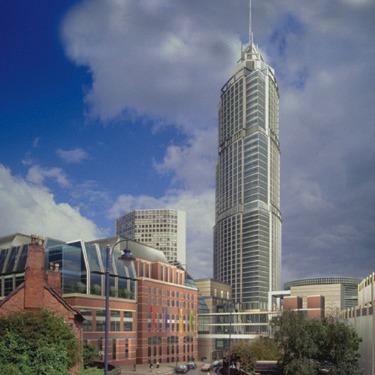
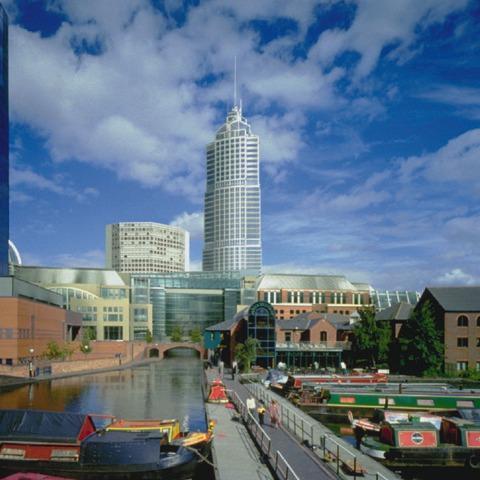 >
>
Birminghams is Arena Central but, is currently being redesigned. At the moment we havent got a clue on what its going to be, but this is the what the approved one looks like.
Height: 187m
Spire: 245m
* Initial plans for the Arena Central scheme, first put forward in 1998 did not include any buildings over 20 floors, but after intervention by the local council, a 50 storey tower was incorporated into the scheme as it was considered one of the most visable and prominant locations int he City Centre.
* Planning permission was granted by the deputy primister in 2000 for a 50 storey tower with spire rising to a height of 245m making it then the tallest building in the country and one of the tallest towers in Europe.
* However, the scheme later hit a number of set backs after 11th sept 2001 when fears of the tower being a terrorist target were raised and part owners Hampton Trust pulled out of the project.
* In 2003, new partners in the form of Bridgewaters Capitals Andy Ruhan were found and papers were signed in 2004.
* A new masterplan is now being drawn up and Australian developers Multiplex have come onboard to help design a "landmark highrise structure" for the site.
* In Dec 2004, planning permission which would have ran out for the 245m tower in Feb 2005 was extended to Dec 2010
* The new Masterplan for the site is expected to be unveilled anytime soon with construction starting late 2005/early 2006

 >
>
Asian effect on US skylines?
Give me your gut reaction on this one; it's pure speculation and it addresses values we may have ten years from now that we don't have today:
Asian skyscrapers going up (or planned) will soon exceed in height anything a US city has to offer. And the US has no interest in any race to the sky; US high rises are far more dependant on practicality and viability than the Asian showcases which are often built with the prestige of their nations in mind with the formula Height=Prestige.
What effect will the US exit from the height race have on the skylines of American cities?
With no desire to match the height of Asian (or other developing parts of the world) skylines, will height become less of a factor in the planning of a high profile building? In other words, with the giants going up in Asia, will Americans lose some of that desire to build our skylines upward, realizing that:
• we're never be as tall as Asia....and that's o.k.
• aestetically, our skylines don't depend on increasingly higher elevation to make them attractive...or to make our cities great. As in.......Height does not necessarily have to indicate greatness in our cities.>
Asian skyscrapers going up (or planned) will soon exceed in height anything a US city has to offer. And the US has no interest in any race to the sky; US high rises are far more dependant on practicality and viability than the Asian showcases which are often built with the prestige of their nations in mind with the formula Height=Prestige.
What effect will the US exit from the height race have on the skylines of American cities?
With no desire to match the height of Asian (or other developing parts of the world) skylines, will height become less of a factor in the planning of a high profile building? In other words, with the giants going up in Asia, will Americans lose some of that desire to build our skylines upward, realizing that:
• we're never be as tall as Asia....and that's o.k.
• aestetically, our skylines don't depend on increasingly higher elevation to make them attractive...or to make our cities great. As in.......Height does not necessarily have to indicate greatness in our cities.>
Sydney again named ‘world’s best city’
Sydney


Quote:>
>
| Sydney again named Â'worldÂ's best cityÂ' Sydney has again been named the Â'WorldÂ's Best CityÂ' by US based Travel and Leisure Magazine. The city has won this title consecutively for the past four years. Tourism NSW has reflected SydneyÂ's worldwide image in its Â'ThereÂ's no place in the world like SydneyÂ' advertising campaigns, costing $4 million. Executive director and gm of Tourism NSW, John OÂ'Neill, said the investment in the Sydney tourism brand was paying off, and the friendliness and vibrancy of SydneyÂ's residents had enhanced the cityÂ's image. Travel and Leisure magazineÂ's WorldÂ's Best Awards recognise readersÂ' favourite hotels, cities, islands, tour outfitters, airliners, cruise liners and rental car agencies. 1 1 Sydney 88.30 2 4 Bangkok 87.08 3 2 Rome 86.26 4 3 Florence 86.20 5 n/a Chiang Mai, Thailand 84.93 6 6 New York 84.82 7 8 Istanbul 84.78 8 5 Cape Town 84.51 9 7 Oaxaca, Mexico 84.41 10 n/a San Francisco N/A www.travelbiz.com.au/articles/37/0c032637.asp |
Quote:>
>>
| Sydney the darling of US travellers American travellers have voted Sydney the world's best city for the eighth time. The 2000 Olympic city nudged out Bangkok, Rome, Florence and Chiang Mai to take out the US Travel and Leisure magazine's top spot, with the publication's home city New York coming in at sixth. Sydney was not Australia's only shining light in the awards, with the Great Barrier Reef islands rating No 5 in the world's top polling islands and No 1 in the Australia, New Zealand and South Pacific section of the same category. "Which country has the world's friendliest natives, an exhilarating wine scene, world-famous beaches and stunning natural wonders? Australia, of course," a spokesman for the magazine said. "Year after year, Sydney tops our readers' World's Best Cities list and year after year, travellers return from the other side of the world exhilarated with what they've seen." Tourism Australia boss Scott Morrison said his organisation's toughest challenge was to convert that love of Sydney into visits. http://news.ninemsn.com.au/article.aspx?id=55101 |
how credible is GaWC inventory of world cities?
An influential attempt to define and categorise world cities was made by the Globalization and World Cities Study Group & Network (GaWC) [1], based primarily at Loughborough University in England. The roster was outlined in the GaWC Research Bulletin 5 [2] and ranked cities based on their provision of "advanced producer services" such as accountancy, advertising, banking/finance and law. The Inventory identifies three levels of world city, termed Alpha, Beta and Gamma for their relative influence. Each level contains two or three sub-ranks. There is also a fourth level of cities that show potential to become world cities in the future. This classification is not yet authoritative, but is certainly useful as a starting point for discussion.
Quote:>
>There is a schematic map of the GaWC cities at their website, [3], which shows clearly that the great majority of their defined cities lie in the Northern Hemisphere. The GaWC is a somewhat subjective ranking, as is any other, but the top four listed cities at least match those commonly considered the major world cities.>
| The Alpha (most influential) world cities were divided into two sub-ranks: 12 points: London, New York City, Paris, Tokyo 10 points: Chicago, Frankfurt, Hong Kong, Los Angeles, Milan, Singapore, Toronto The Beta (major) World Cities are: 9 Points: San Francisco, Sydney, Zurich 8 Points: Brussels, Madrid, Mexico City, Sao Paulo 7 Points: Moscow, Seoul The Gamma (minor) World Cities are: 6 Points: Amsterdam, Boston, Caracas, Dallas, Düsseldorf, Geneva, Houston, Jakarta, Johannesburg, Melbourne, Osaka, Prague, Santiago, Taipei, Washington 5 Points: Bangkok, Beijing, Montreal, Rome, Stockholm, Warsaw 4 Points: Atlanta, Barcelona, Berlin, Budapest, Buenos Aires, Copenhagen, Hamburg, Istanbul, Kuala Lumpur, Manila, Miami, Minneapolis, Munich, Shanghai, Tehran There is also a category for cities showing strong evidence of becoming world cities, these are: 3 Points: Athens, Auckland, Dublin, Helsinki, Luxembourg, Lyon, Mumbai, New Delhi, Philadelphia, Rio de Janeiro, Tel Aviv, Vienna and cities showing some evidence: 2 Points: Abu Dhabi, Almaty, Birmingham, Bogota, Bratislava, Brisbane, Bucharest, Cairo, Cleveland, Cologne, Detroit, Dubai, Ho Chi Minh City, Kiev, Lima, Lisbon, Manchester, Montevideo, Oslo, Riyadh, Rotterdam, Seattle, Stuttgart, The Hague, Vancouver and cities displaying minimal evidence: 1 Point: Adelaide, Antwerp, Arhus, Baltimore, Bangalore, Bologna, Brasilia, Calgary, Cape Town, Colombo, Columbus, Dresden, Edinburgh, Genoa, Glasgow, Gothenburg, Guangzhou, Hanoi,Jerusalem, Kansas City, Leeds, Lille, Marseille, Richmond, St Petersburg, Tashkent, Tehran, Tijuana, Turin, Utrecht, Wellington |
Free $100 Restaurant Gift Certificate for Restaurant of your Choice!
Free $100 Restaurant Gift Certificate for Restaurant of your Choice!
Link>
Link>
What's the tallest building PROPOSED in your city?
Since there is one for approved, why not one that is proposed? So what does your city offer?
Boston-
Name-Gateway Center (aka South Bay Tower)
Height-244m/800ft
Floors-67

 >
>
Boston-
Name-Gateway Center (aka South Bay Tower)
Height-244m/800ft
Floors-67

 >
>
README: CITYTALK & URBAN ISSUES - RULES & REGULATIONS
Welcome to Citytalk & Urban Issues.
This forum is dedicated to discussing the world's urban spaces in a qualitative manner. This can be done by attaching a properly cited news article, commentary or research/statistical data... Or, you can just create a thread with your own commentary...
Photo threads are strongly discouraged, as there are forums dedicated to photo threads...
[u]Additionally, any kind of commentary (thread or post) which seeks to pit one city, region or nation against another, in a manner seeking to know which one is the 'best' or the 'favorite', is expressly forbidden.
Threads not discussing specific city issues, city life or urbanity will be locked or moved.
If you are unsure what this all means, look at the forum itself and see what regulars post for topics... Or, private message a moderator.
Thank you for your cooperation,
SSC Staff
>
This forum is dedicated to discussing the world's urban spaces in a qualitative manner. This can be done by attaching a properly cited news article, commentary or research/statistical data... Or, you can just create a thread with your own commentary...
Photo threads are strongly discouraged, as there are forums dedicated to photo threads...
[u]Additionally, any kind of commentary (thread or post) which seeks to pit one city, region or nation against another, in a manner seeking to know which one is the 'best' or the 'favorite', is expressly forbidden.
Threads not discussing specific city issues, city life or urbanity will be locked or moved.
If you are unsure what this all means, look at the forum itself and see what regulars post for topics... Or, private message a moderator.
Thank you for your cooperation,
SSC Staff
>
Which city is the slum capital of the world?
Which city is the slum capital of the world?
I think it is Karachi ,but unsure >
>
I think it is Karachi ,but unsure
 >
>
Peru releases Machu Picchu master plan
Peru releases Machu Picchu master plan
2 June 2005
LIMA, Peru (AP) - Peru's National Institute of Culture released a 10-year master plan Thursday aimed at conserving the ruins of Machu Picchu, where heavy tourism and uncontrolled nearby development have endangered the "Lost City of the Incas."
Last year, UNESCO threatened to place Machu Picchu, Peru's prime tourist destination, on its list of endangered cultural heritage sites.
Among other measures, the plan calls for increasing the entry fee for foreigners from US$20 to US$30 (euro16 to 24), limiting the daily maximum number of tourists to 2,500 and launching conservation measures to protect other ruins, wildlife and fauna along the Inca Trail.
UNESCO added Machu Picchu, located atop a craggy peak amid jungle in Peru's southern Andes some 500 kilometers (310 miles) southeast of Lima, to its World Heritage List in 1983.
In 1992, 9,000 tourists visited the ruins. In 2002, the figure rose to 150,000, according to the document's executive summary.
"It is estimated that in a few short years, demand could increase to 4,000 or 5,000 tourists daily," the document stated.
UNESCO criticized Peru for the absence of urban planning in nearby Aguas Calientes, a chaotic, ramshackle town and tourist trap where trains unload visitors onto buses to ascend the mountain to Machu Picchu.
The town's precarious location -- much of it within the protected sanctuary -- has proven dangerous. Last year, a mudslide triggered by heavy rains wiped out several buildings, killing a dozen townspeople.
The master plan calls for incentive programs "to relocate people who have occupied the protected area."
It also mentioned promoting other Inca ruins and trails in the area, offering "activities for visitors based on Andean rituals related to the cycles of the sun," which was worshipped by the Inca culture.
Even before its release, the plan has faced stiff resistance from local residents who oppose the creation of any new government controls to oversee national heritage sites.
Last month, some 1,000 visitors were forced to cancel or postpone trips to the citadel because train service from Cuzco was suspended due to a protest in the area.>
2 June 2005
LIMA, Peru (AP) - Peru's National Institute of Culture released a 10-year master plan Thursday aimed at conserving the ruins of Machu Picchu, where heavy tourism and uncontrolled nearby development have endangered the "Lost City of the Incas."
Last year, UNESCO threatened to place Machu Picchu, Peru's prime tourist destination, on its list of endangered cultural heritage sites.
Among other measures, the plan calls for increasing the entry fee for foreigners from US$20 to US$30 (euro16 to 24), limiting the daily maximum number of tourists to 2,500 and launching conservation measures to protect other ruins, wildlife and fauna along the Inca Trail.
UNESCO added Machu Picchu, located atop a craggy peak amid jungle in Peru's southern Andes some 500 kilometers (310 miles) southeast of Lima, to its World Heritage List in 1983.
In 1992, 9,000 tourists visited the ruins. In 2002, the figure rose to 150,000, according to the document's executive summary.
"It is estimated that in a few short years, demand could increase to 4,000 or 5,000 tourists daily," the document stated.
UNESCO criticized Peru for the absence of urban planning in nearby Aguas Calientes, a chaotic, ramshackle town and tourist trap where trains unload visitors onto buses to ascend the mountain to Machu Picchu.
The town's precarious location -- much of it within the protected sanctuary -- has proven dangerous. Last year, a mudslide triggered by heavy rains wiped out several buildings, killing a dozen townspeople.
The master plan calls for incentive programs "to relocate people who have occupied the protected area."
It also mentioned promoting other Inca ruins and trails in the area, offering "activities for visitors based on Andean rituals related to the cycles of the sun," which was worshipped by the Inca culture.
Even before its release, the plan has faced stiff resistance from local residents who oppose the creation of any new government controls to oversee national heritage sites.
Last month, some 1,000 visitors were forced to cancel or postpone trips to the citadel because train service from Cuzco was suspended due to a protest in the area.>
Is Scandinavia Wealthy? NYT article/propaganda?
NY Times
April 17, 2005
PERSPECTIVE
We're Rich, You're Not. End of Story.
By BRUCE BAWER
OSLO — THE received wisdom about economic life in the Nordic countries is easily summed up: people here are incomparably affluent, with all their needs met by an efficient welfare state. They believe it themselves. Yet the reality - as this Oslo-dwelling American can attest, and as some recent studies confirm - is not quite what it appears.
Even as the Scandinavian establishment peddles this dubious line, it serves up a picture of the United States as a nation divided, inequitably, among robber barons and wage slaves, not to mention armies of the homeless and unemployed. It does this to keep people believing that their social welfare system, financed by lofty income taxes, provides far more in the way of economic protections and amenities than the American system. Protections, yes -but some Norwegians might question the part about amenities.
In Oslo, library collections are woefully outdated, and public swimming pools are in desperate need of maintenance. News reports describe serious shortages of police officers and school supplies. When my mother-in-law went to an emergency room recently, the hospital was out of cough medicine. Drug addicts crowd downtown Oslo streets, as The Los Angeles Times recently reported, but applicants for methadone programs are put on a months-long waiting list.
In Norway, the standard line is that there must be some mistake, that such things simply should not happen in "the world's richest country." Why do Norwegians have such a wealthy self-image? Partly because, compared with their grandparents (who lived before the discovery of North Sea oil), they are rich. Few, however, question whether it really is the world's richest country.
After I moved here six years ago, I quickly noticed that Norwegians live more frugally than Americans do. They hang on to old appliances and furniture that we would throw out. And they drive around in wrecks. In 2003, when my partner and I took his teenage brother to New York - his first trip outside of Europe - he stared boggle-eyed at the cars in the Newark Airport parking lot, as mesmerized as Robin Williams in a New York grocery store in "Moscow on the Hudson."
One image in particular sticks in my mind. In a Norwegian language class, my teacher illustrated the meaning of the word matpakke - "packed lunch" - by reaching into her backpack and pulling out a hero sandwich wrapped in wax paper. It was her lunch. She held it up for all to see.
Yes, teachers are underpaid everywhere. But in Norway the matpakke is ubiquitous, from classroom to boardroom. In New York, an office worker might pop out at lunchtime to a deli; in Paris, she might enjoy quiche and a glass of wine at a brasserie. In Norway, she will sit at her desk with a sandwich from home.
It is not simply a matter of tradition, or a preference for a basic, nonmaterialistic life. Dining out is just too pricey in a country where teachers, for example, make about $50,000 a year before taxes. Even the humblest of meals - a large pizza delivered from Oslo's most popular pizza joint - will run from $34 to $48, including delivery fee and a 25 percent value added tax.
Not that groceries are cheap, either. Every weekend, armies of Norwegians drive to Sweden to stock up at supermarkets that are a bargain only by Norwegian standards. And this isn't a great solution, either, since gasoline (in this oil-exporting nation) costs more than $6 a gallon.
All this was illuminated last year in a study by a Swedish research organization, Timbro, which compared the gross domestic products of the 15 European Union members (before the 2004 expansion) with those of the 50 American states and the District of Columbia. (Norway, not being a member of the union, was not included.)
After adjusting the figures for the different purchasing powers of the dollar and euro, the only European country whose economic output per person was greater than the United States average was the tiny tax haven of Luxembourg, which ranked third, just behind Delaware and slightly ahead of Connecticut.
The next European country on the list was Ireland, down at 41st place out of 66; Sweden was 14th from the bottom (after Alabama), followed by Oklahoma, and then Britain, France, Finland, Germany and Italy. The bottom three spots on the list went to Spain, Portugal and Greece.
Alternatively, the study found, if the E.U. was treated as a single American state, it would rank fifth from the bottom, topping only Arkansas, Montana, West Virginia and Mississippi. In short, while Scandinavians are constantly told how much better they have it than Americans, Timbro's statistics suggest otherwise. So did a paper by a Swedish economics writer, Johan Norberg.
Contrasting "the American dream" with "the European daydream," Mr. Norberg described the difference: "Economic growth in the last 25 years has been 3 percent per annum in the U.S., compared to 2.2 percent in the E.U. That means that the American economy has almost doubled, whereas the E.U. economy has grown by slightly more than half. The purchasing power in the U.S. is $36,100 per capita, and in the E.U. $26,000 - and the gap is constantly widening."
The one detail in Timbro's study that didn't feel right to me was the placement of Scandinavian countries near the top of the list and Spain near the bottom. My own sense of things is that Spaniards live far better than Scandinavians. In Norwegian pubs, for example, anyone rich or insane enough to order, say, a gin and tonic is charged about $15 for a few teaspoons of gin at the bottom of a glass of tonic; in Spain, the drinks are dirt-cheap and the bartender will pour the gin up to the rim unless you say "stop."
In late March, another study, this one from KPMG, the international accounting and consulting firm, cast light on this paradox. It indicated that when disposable income was adjusted for cost of living, Scandinavians were the poorest people in Western Europe. Danes had the lowest adjusted income, Norwegians the second lowest, Swedes the third. Spain and Portugal, with two of Europe's least regulated economies, led the list.
Most recently, the Danish Ministry of Finance released a study comparing the income available for private consumption in 30 countries. Norway did somewhat better here than in the KPMG study, lagging behind most of Western Europe but at least beating out Ireland and Portugal.
The thrust, however, was to confirm Timbro's and Mr. Norberg's picture of American and European wealth. While the private-consumption figure for the United States was $32,900 per person, the countries of Western Europe (again excepting Luxembourg, at $29,450) ranged between $13,850 and $23,500, with Norway at $18,350.
Meanwhile, the references to Norway as "the world's richest country" keep on coming. An April 2 article in Dagsavisen, a major Oslo daily, asked: How is it that "in the world's richest country we're tearing down social services that were built up when Norway was much poorer?"
Obviously, this is one misconception that won't be put to rest by a measly think-tank study or two.>
April 17, 2005
PERSPECTIVE
We're Rich, You're Not. End of Story.
By BRUCE BAWER
OSLO — THE received wisdom about economic life in the Nordic countries is easily summed up: people here are incomparably affluent, with all their needs met by an efficient welfare state. They believe it themselves. Yet the reality - as this Oslo-dwelling American can attest, and as some recent studies confirm - is not quite what it appears.
Even as the Scandinavian establishment peddles this dubious line, it serves up a picture of the United States as a nation divided, inequitably, among robber barons and wage slaves, not to mention armies of the homeless and unemployed. It does this to keep people believing that their social welfare system, financed by lofty income taxes, provides far more in the way of economic protections and amenities than the American system. Protections, yes -but some Norwegians might question the part about amenities.
In Oslo, library collections are woefully outdated, and public swimming pools are in desperate need of maintenance. News reports describe serious shortages of police officers and school supplies. When my mother-in-law went to an emergency room recently, the hospital was out of cough medicine. Drug addicts crowd downtown Oslo streets, as The Los Angeles Times recently reported, but applicants for methadone programs are put on a months-long waiting list.
In Norway, the standard line is that there must be some mistake, that such things simply should not happen in "the world's richest country." Why do Norwegians have such a wealthy self-image? Partly because, compared with their grandparents (who lived before the discovery of North Sea oil), they are rich. Few, however, question whether it really is the world's richest country.
After I moved here six years ago, I quickly noticed that Norwegians live more frugally than Americans do. They hang on to old appliances and furniture that we would throw out. And they drive around in wrecks. In 2003, when my partner and I took his teenage brother to New York - his first trip outside of Europe - he stared boggle-eyed at the cars in the Newark Airport parking lot, as mesmerized as Robin Williams in a New York grocery store in "Moscow on the Hudson."
One image in particular sticks in my mind. In a Norwegian language class, my teacher illustrated the meaning of the word matpakke - "packed lunch" - by reaching into her backpack and pulling out a hero sandwich wrapped in wax paper. It was her lunch. She held it up for all to see.
Yes, teachers are underpaid everywhere. But in Norway the matpakke is ubiquitous, from classroom to boardroom. In New York, an office worker might pop out at lunchtime to a deli; in Paris, she might enjoy quiche and a glass of wine at a brasserie. In Norway, she will sit at her desk with a sandwich from home.
It is not simply a matter of tradition, or a preference for a basic, nonmaterialistic life. Dining out is just too pricey in a country where teachers, for example, make about $50,000 a year before taxes. Even the humblest of meals - a large pizza delivered from Oslo's most popular pizza joint - will run from $34 to $48, including delivery fee and a 25 percent value added tax.
Not that groceries are cheap, either. Every weekend, armies of Norwegians drive to Sweden to stock up at supermarkets that are a bargain only by Norwegian standards. And this isn't a great solution, either, since gasoline (in this oil-exporting nation) costs more than $6 a gallon.
All this was illuminated last year in a study by a Swedish research organization, Timbro, which compared the gross domestic products of the 15 European Union members (before the 2004 expansion) with those of the 50 American states and the District of Columbia. (Norway, not being a member of the union, was not included.)
After adjusting the figures for the different purchasing powers of the dollar and euro, the only European country whose economic output per person was greater than the United States average was the tiny tax haven of Luxembourg, which ranked third, just behind Delaware and slightly ahead of Connecticut.
The next European country on the list was Ireland, down at 41st place out of 66; Sweden was 14th from the bottom (after Alabama), followed by Oklahoma, and then Britain, France, Finland, Germany and Italy. The bottom three spots on the list went to Spain, Portugal and Greece.
Alternatively, the study found, if the E.U. was treated as a single American state, it would rank fifth from the bottom, topping only Arkansas, Montana, West Virginia and Mississippi. In short, while Scandinavians are constantly told how much better they have it than Americans, Timbro's statistics suggest otherwise. So did a paper by a Swedish economics writer, Johan Norberg.
Contrasting "the American dream" with "the European daydream," Mr. Norberg described the difference: "Economic growth in the last 25 years has been 3 percent per annum in the U.S., compared to 2.2 percent in the E.U. That means that the American economy has almost doubled, whereas the E.U. economy has grown by slightly more than half. The purchasing power in the U.S. is $36,100 per capita, and in the E.U. $26,000 - and the gap is constantly widening."
The one detail in Timbro's study that didn't feel right to me was the placement of Scandinavian countries near the top of the list and Spain near the bottom. My own sense of things is that Spaniards live far better than Scandinavians. In Norwegian pubs, for example, anyone rich or insane enough to order, say, a gin and tonic is charged about $15 for a few teaspoons of gin at the bottom of a glass of tonic; in Spain, the drinks are dirt-cheap and the bartender will pour the gin up to the rim unless you say "stop."
In late March, another study, this one from KPMG, the international accounting and consulting firm, cast light on this paradox. It indicated that when disposable income was adjusted for cost of living, Scandinavians were the poorest people in Western Europe. Danes had the lowest adjusted income, Norwegians the second lowest, Swedes the third. Spain and Portugal, with two of Europe's least regulated economies, led the list.
Most recently, the Danish Ministry of Finance released a study comparing the income available for private consumption in 30 countries. Norway did somewhat better here than in the KPMG study, lagging behind most of Western Europe but at least beating out Ireland and Portugal.
The thrust, however, was to confirm Timbro's and Mr. Norberg's picture of American and European wealth. While the private-consumption figure for the United States was $32,900 per person, the countries of Western Europe (again excepting Luxembourg, at $29,450) ranged between $13,850 and $23,500, with Norway at $18,350.
Meanwhile, the references to Norway as "the world's richest country" keep on coming. An April 2 article in Dagsavisen, a major Oslo daily, asked: How is it that "in the world's richest country we're tearing down social services that were built up when Norway was much poorer?"
Obviously, this is one misconception that won't be put to rest by a measly think-tank study or two.>
Most expensive cities for offices
Occupancy costs per person, which includes rent, taxes, management fees, continues to hit new highs around the world. Here is a list of the top 15 most expensive cities and markets in them. It consists of large office spaces in prime office markets.
2005 Rank--City, market------------Occupancy cost per person
1) London West End----------------$19,330
2)Paris-----------------------------$15,520
3)London City----------------------$15,280
4)Washington, D.C.-----------------$14,250
5)Frankfurt-------------------------$13,640
6)Tokyo Central--------------------$13,400
7)Dublin----------------------------$12,740
8)New York Midtown----------------$12,200
9)Munich---------------------------$12,010
10)Stockholm-----------------------$10,780
11)Amsterdam----------------------$9,740
12)Edinburgh-----------------------$9,680
13)Toronto-------------------------$9,670
14)Hong Kong (tied)----------------$9,320
14)Seoul (tied)---------------------$9,320
The source of this list was DTZ Research and it was printed in USA Today on Tuesday, May 31.
Since the costs are listed in US Dollars I would assume that exchange rates played a sizable role in determining the results.>
2005 Rank--City, market------------Occupancy cost per person
1) London West End----------------$19,330
2)Paris-----------------------------$15,520
3)London City----------------------$15,280
4)Washington, D.C.-----------------$14,250
5)Frankfurt-------------------------$13,640
6)Tokyo Central--------------------$13,400
7)Dublin----------------------------$12,740
8)New York Midtown----------------$12,200
9)Munich---------------------------$12,010
10)Stockholm-----------------------$10,780
11)Amsterdam----------------------$9,740
12)Edinburgh-----------------------$9,680
13)Toronto-------------------------$9,670
14)Hong Kong (tied)----------------$9,320
14)Seoul (tied)---------------------$9,320
The source of this list was DTZ Research and it was printed in USA Today on Tuesday, May 31.
Since the costs are listed in US Dollars I would assume that exchange rates played a sizable role in determining the results.>
Barcelona: art nouveau details (1)
in this first part we will see the top of some modernist buildings in bcn...as you can see, there's a huge diversity in the shapes...hope you like them (there's no uniformity like in other european cities)










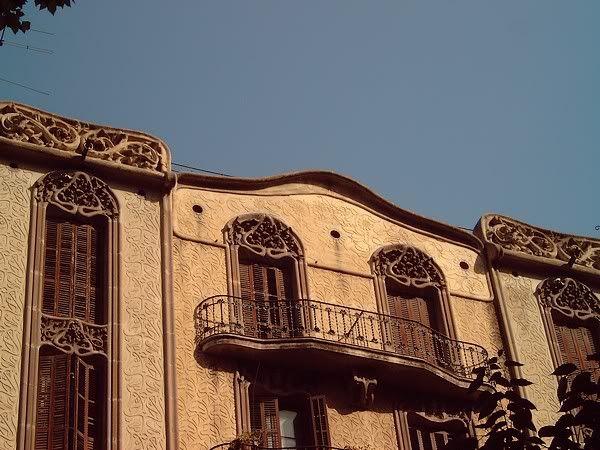
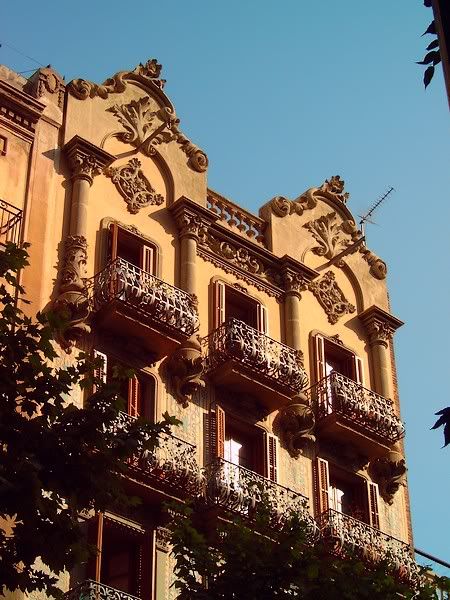

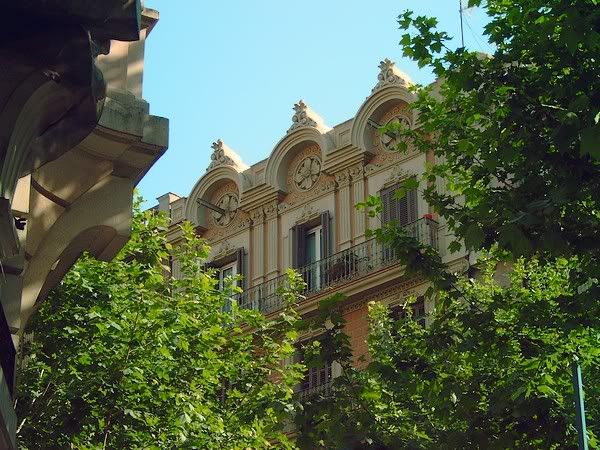

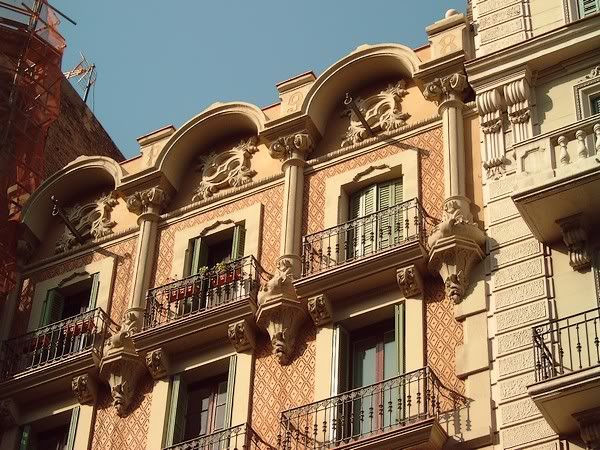
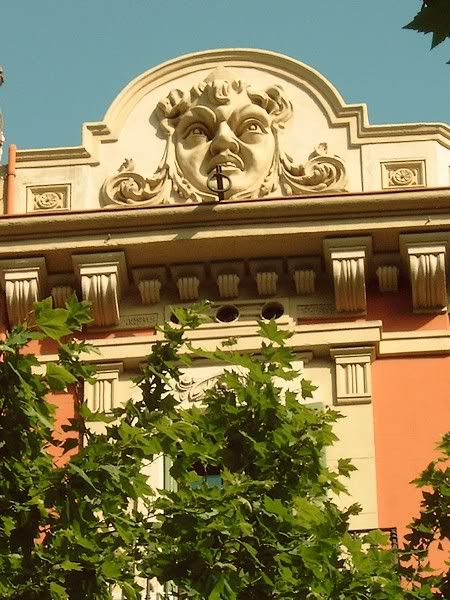

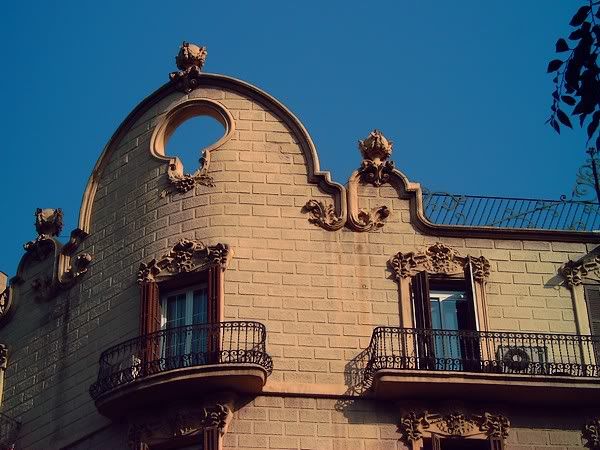


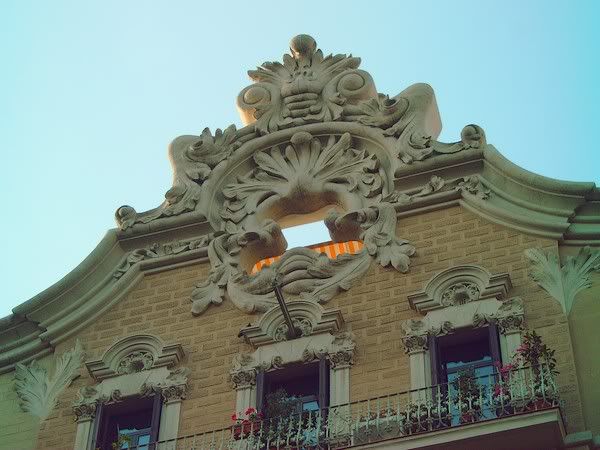
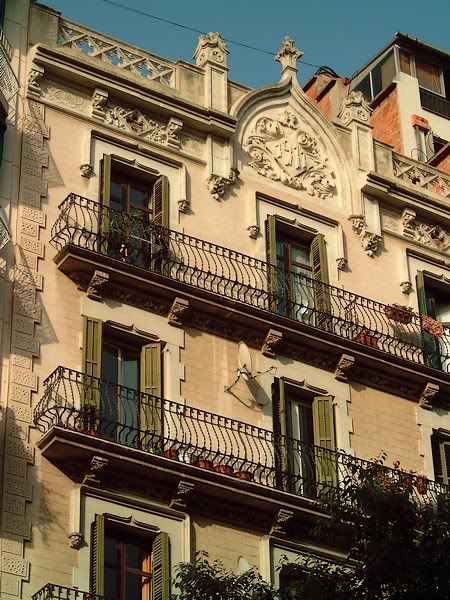
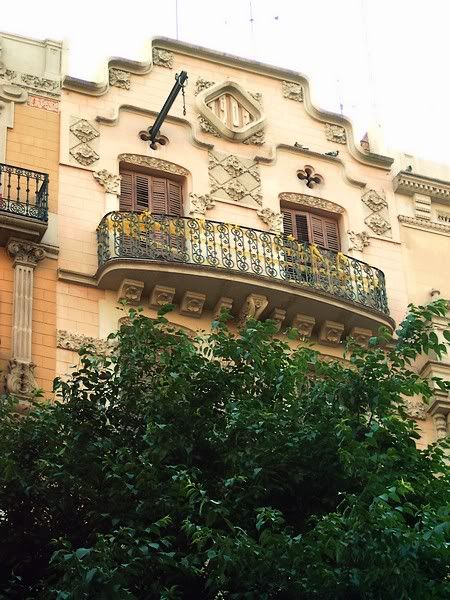

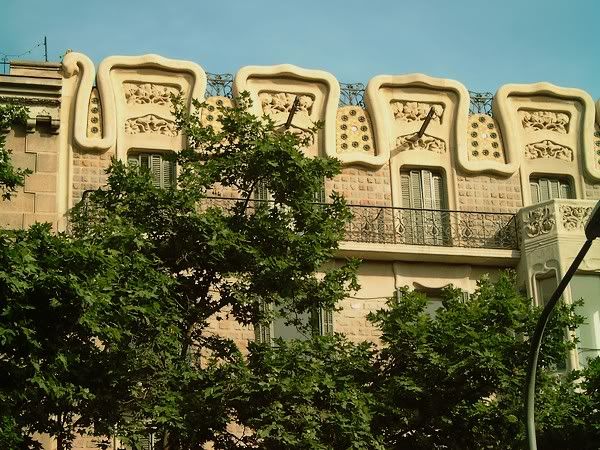

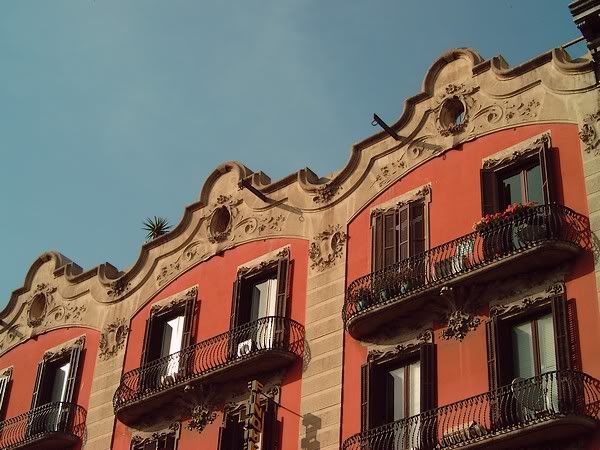

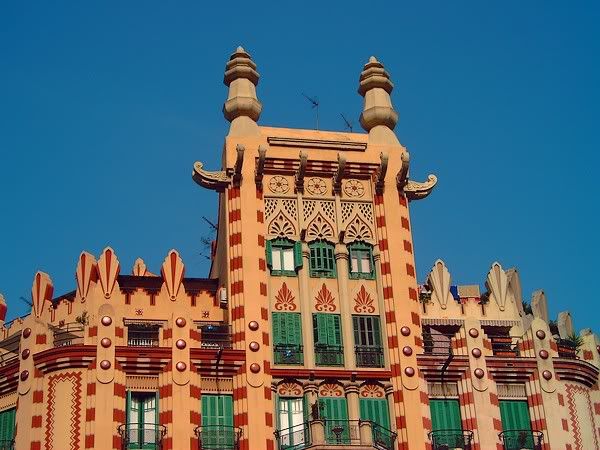
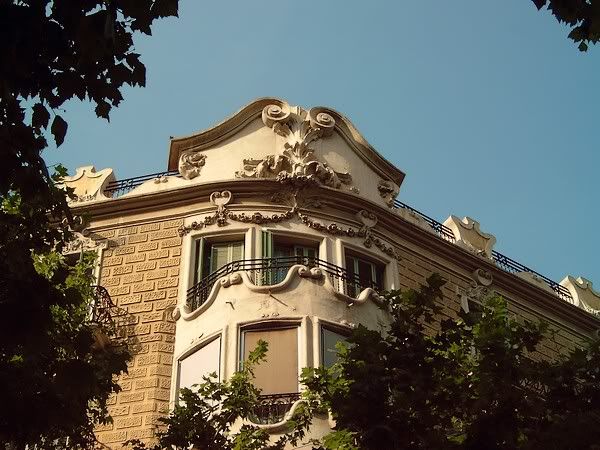
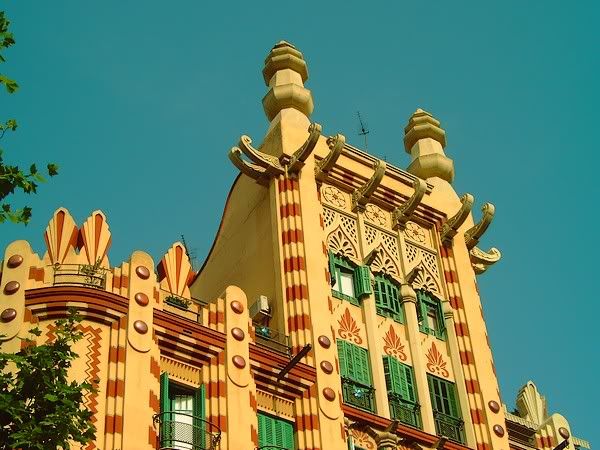

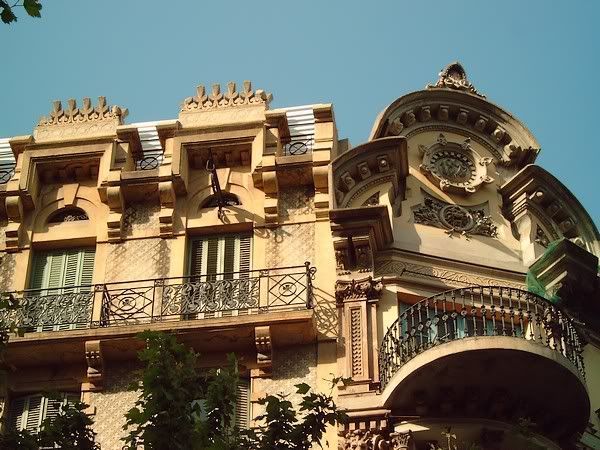

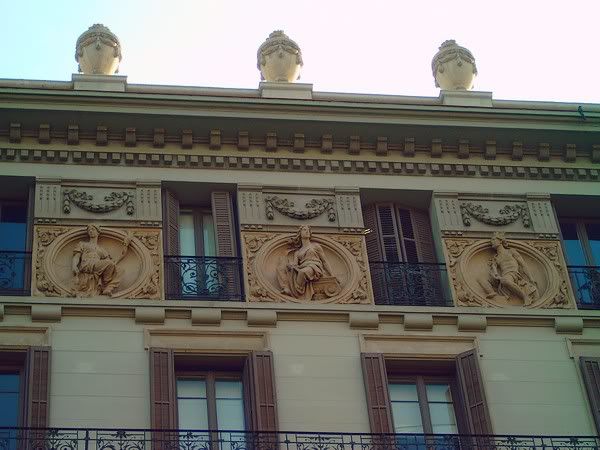


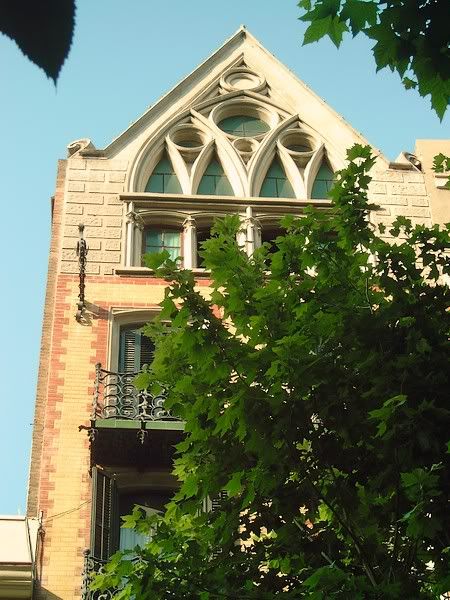


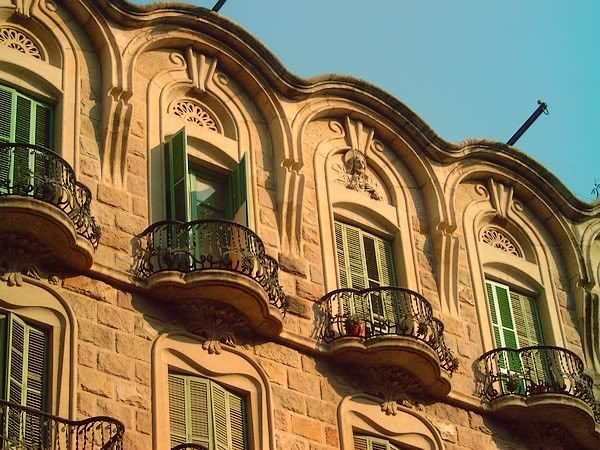


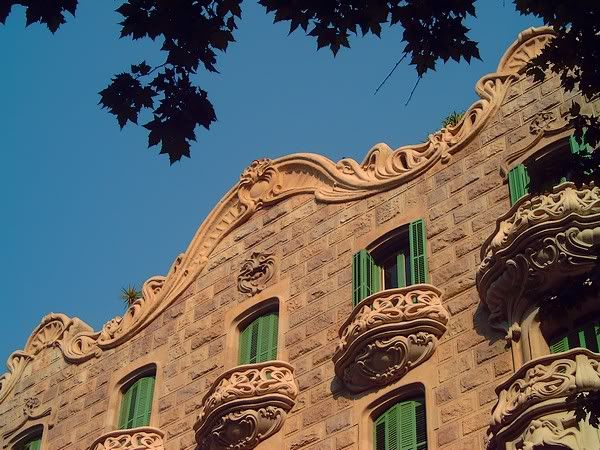
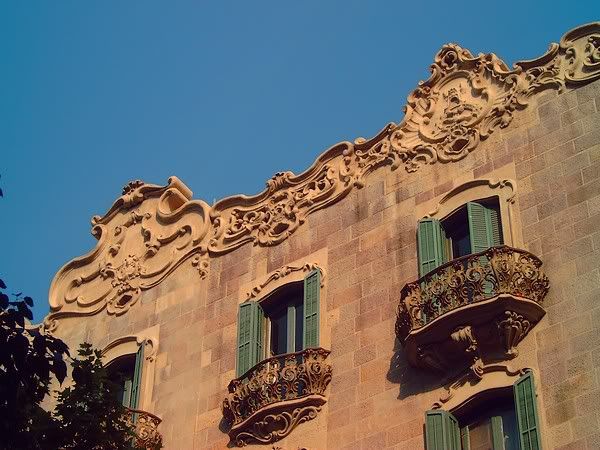

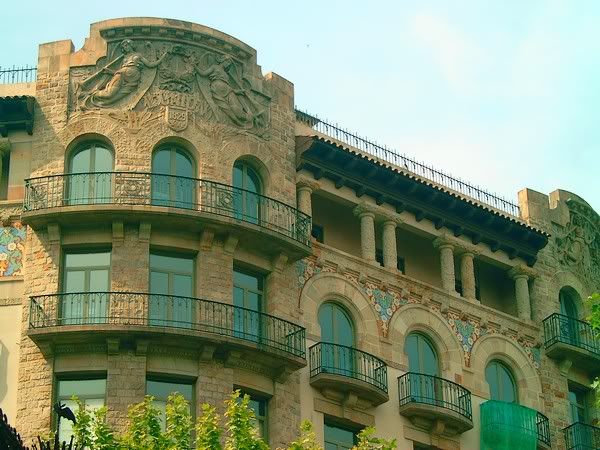


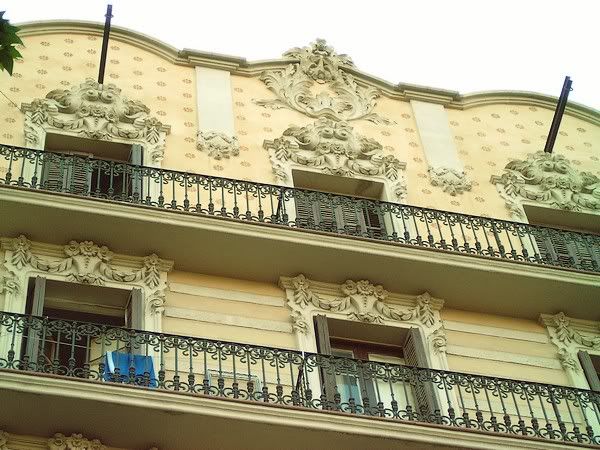

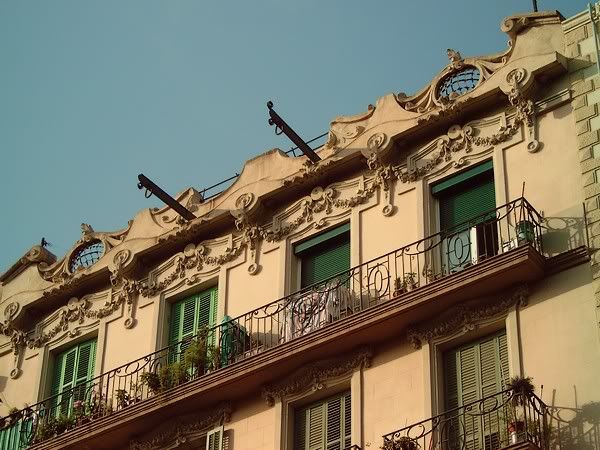
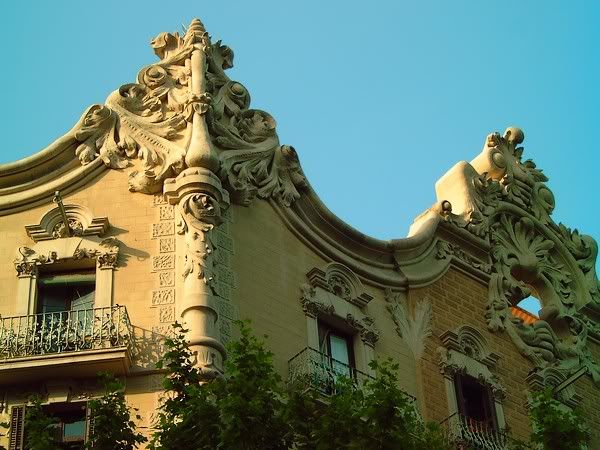

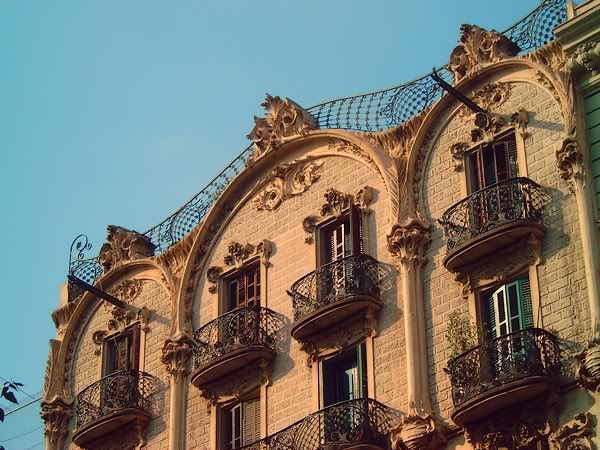


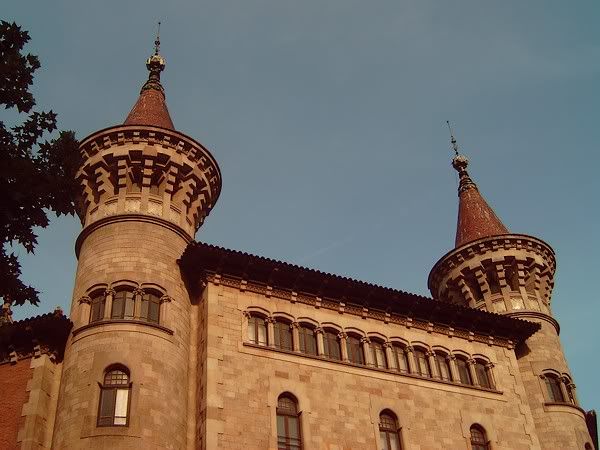






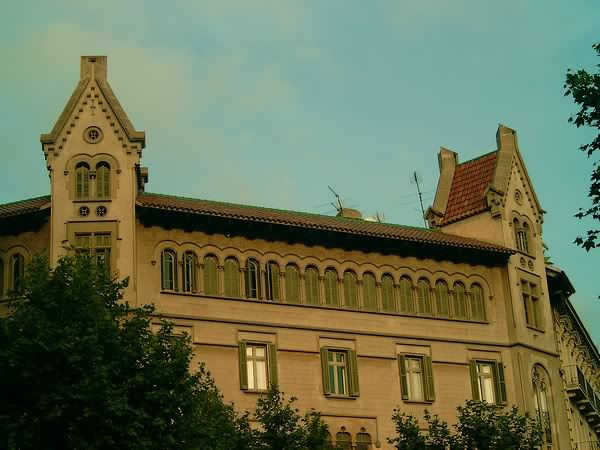



 >
>





































































 >
>
Subscribe to:
Comments (Atom)
Powered by Blogger. DownRight Blogger Theme v1.4 created by (© 2007) Thur Broeders

 >
>

